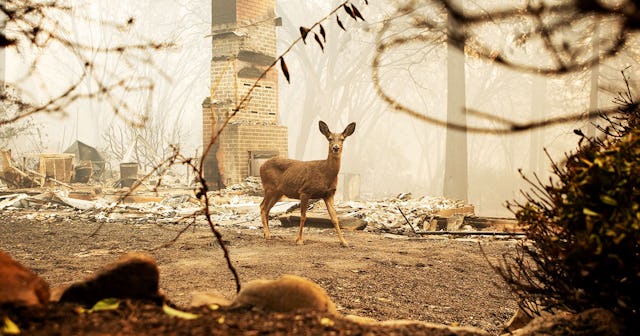UN Warns We Have 10 Years To Save Wildlife Population From Extinction

One million of the world’s 8 million species are currently facing extinction
In news that will send most rational inhabitants of Earth into a nihilistic tailspin, the United Nations says that in order to save our current wildlife population, humans need to work to protect the planet and cut pollution in half by 2030. Why? Because we’re officially entering the planet’s sixth era of mass extinction.
The UN Convention on Biological Diversity has released a draft plan that outlines global goals to combat the current biodiversity crisis during the next few decades. Back in 2010, similar goals were set during a UN summit — but we’ve collectively failed each and every one of them. Which makes the current state of things a verifiable crisis as we face unprecedented extinction rates, weakening ecosystems, and severe consequences for our own survival as the human race.
“Biodiversity, and the benefits it provides, is fundamental to human well-being and a healthy planet,” the draft plan reads. “Despite ongoing efforts, biodiversity is deteriorating worldwide and this decline is projected to continue or worsen under business-as-usual scenarios.”
What differentiates this current mass extinction from previous ones is that this one is the first caused exclusively by humans. Here’s what this current extinction could look like if swift action isn’t taken: elephants could be gone from the wild within just a single generation. Amphibian populations will continue to decline and collapse. And due to climate change causing global warming, the oceans are acidifying — which is permanently damaging the coral reefs into eventual annihilation.
One million of the world’s 8 million species are currently facing extinction. The rate of this extinction is, at minimum, tens of hundreds of times higher than extinction rates of the past 10 million years.
The UN cites shrinking habitats, the exploitation of natural resources, climate change and pollution as the main threats. Humans have altered 75% of Earth’s land and 66% of marine ecosystems since pre-industrial times.
To achieve stabilization and the eventual recovery of Earth’s ecosystems, the UN plan outlines 20 targets we need to hit. And this isn’t just for politicians to agree and vote on — these targets are aimed at both global and local levels. Basically, we all need to act. Now.
Here’s what the UN says needs to happen by 2030:
- Give protected status to sites important for biodiversity — covering at least 30% of these land and sea areas by 2030, with at least 10% under “strict protection.”
- Cut pollution from biocides, plastic wastes, and excess nutrients by at least 50%.
- Ensure the trade of all wild species is legal and sustainable.
- Bring greater sustainability to economic sectors and individual consumption.
- Empower indigenous communities in the conservation effort.
Other goals that need to be met focus on the quality of human life, like providing better food security and clean water for the most vulnerable communities. This, in turn, helps reduce “human-wildlife conflict.”
One huge part of this global crisis: population growth. A rising populace causes a rise in demand — and if we don’t have the resources to meet that demand, and we already don’t, then we have a major problem. This puts agriculture at risk.
Unfortunately, the population isn’t expected to decline anytime soon. The UN warns that the current world population of 7.6 billion will likely reach 8.6 billion by 2030 — and it’ll continue to grow from there. Which just makes it even more crucial that we take their warnings and their solutions seriously. Life as we know it literally depends on it.